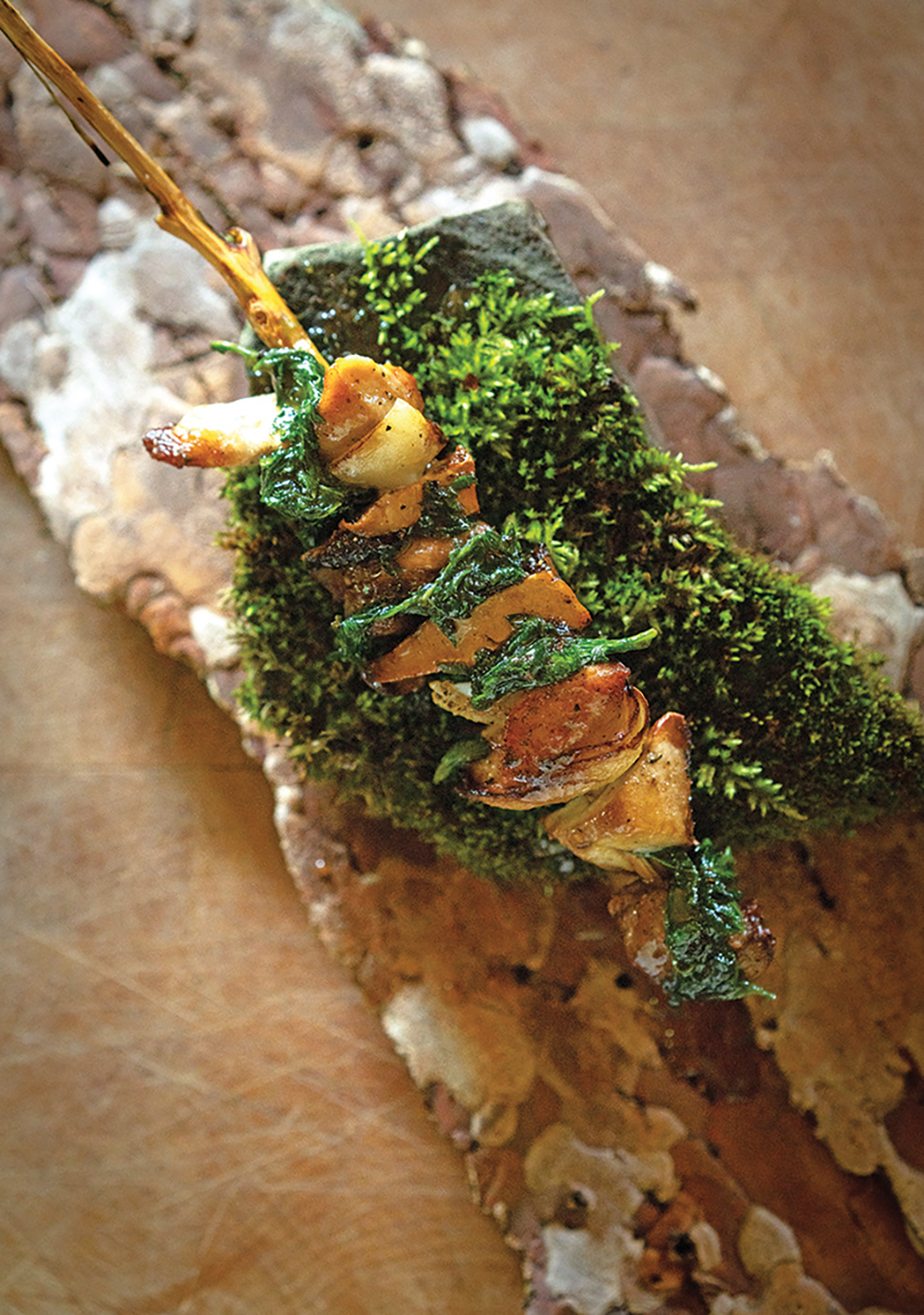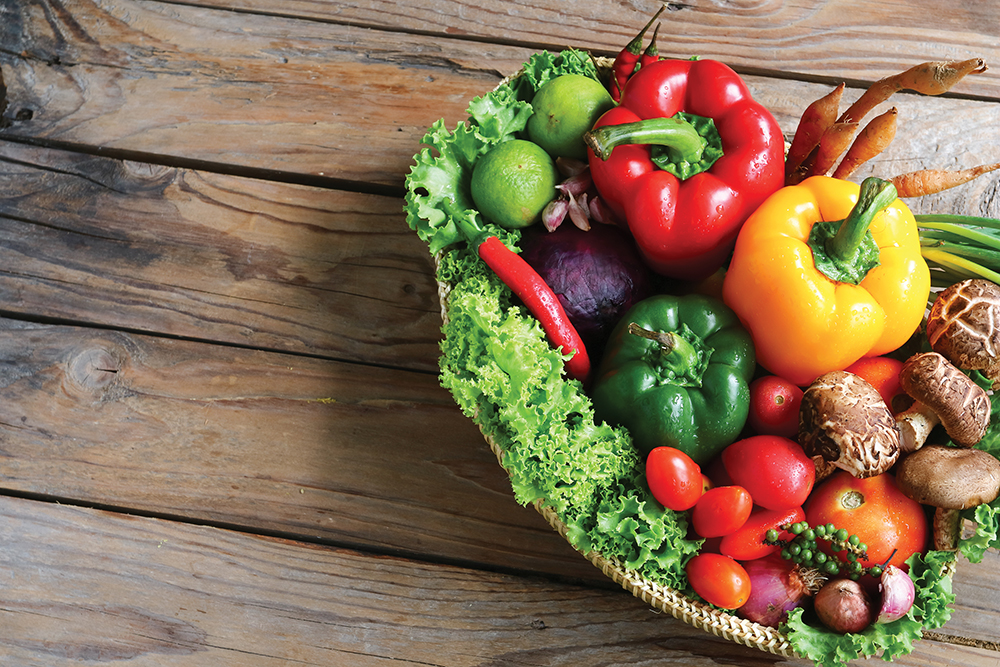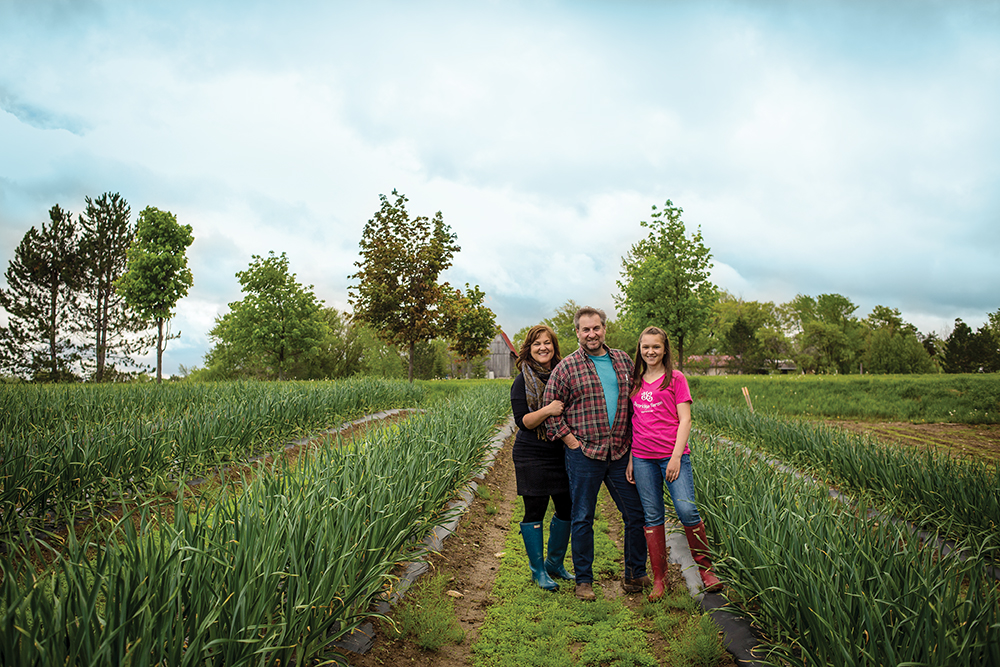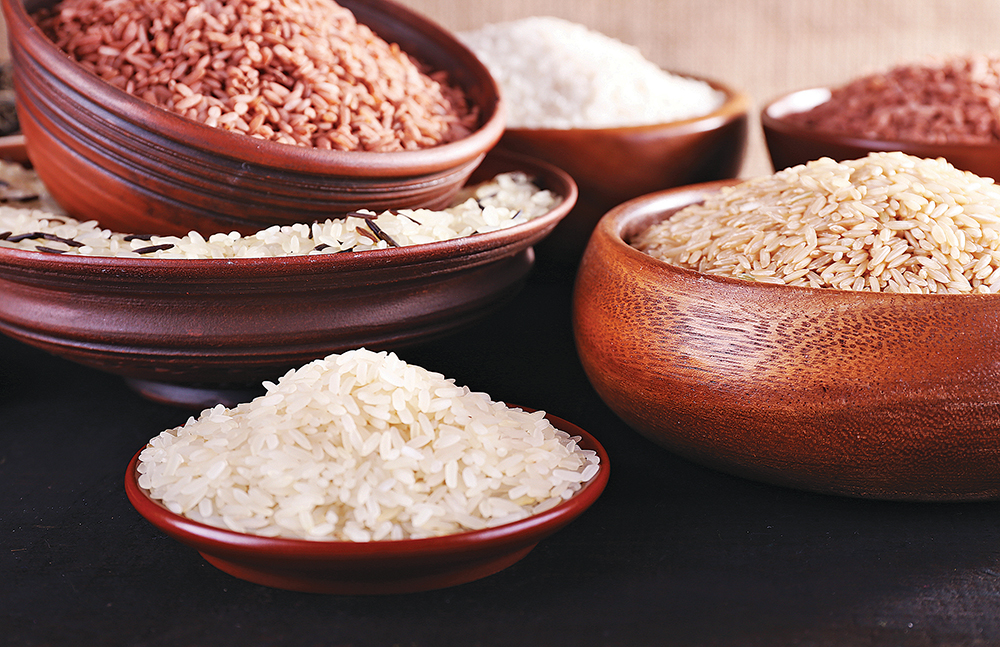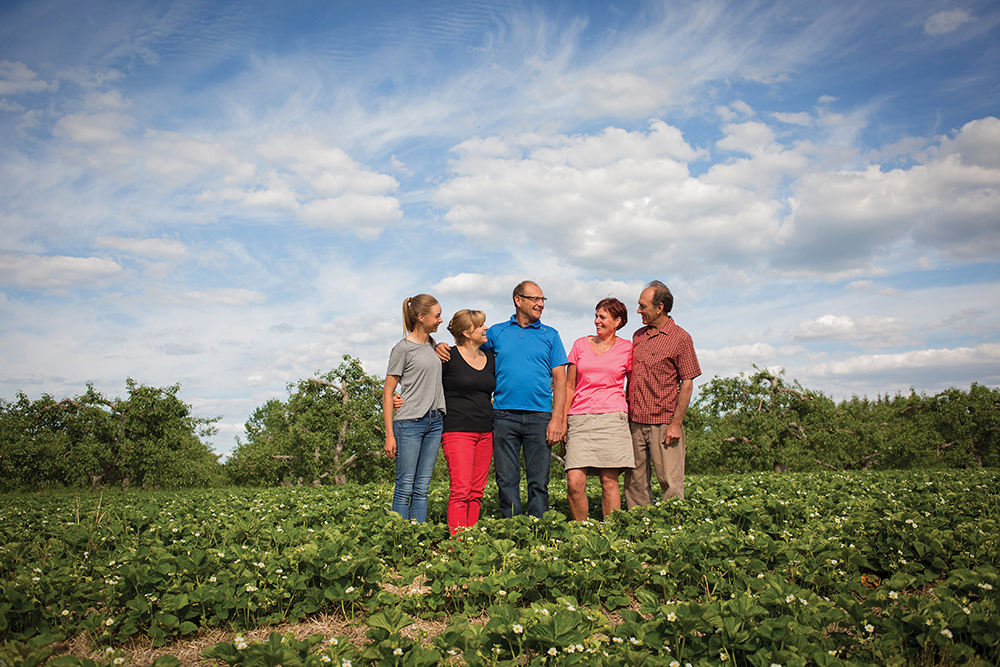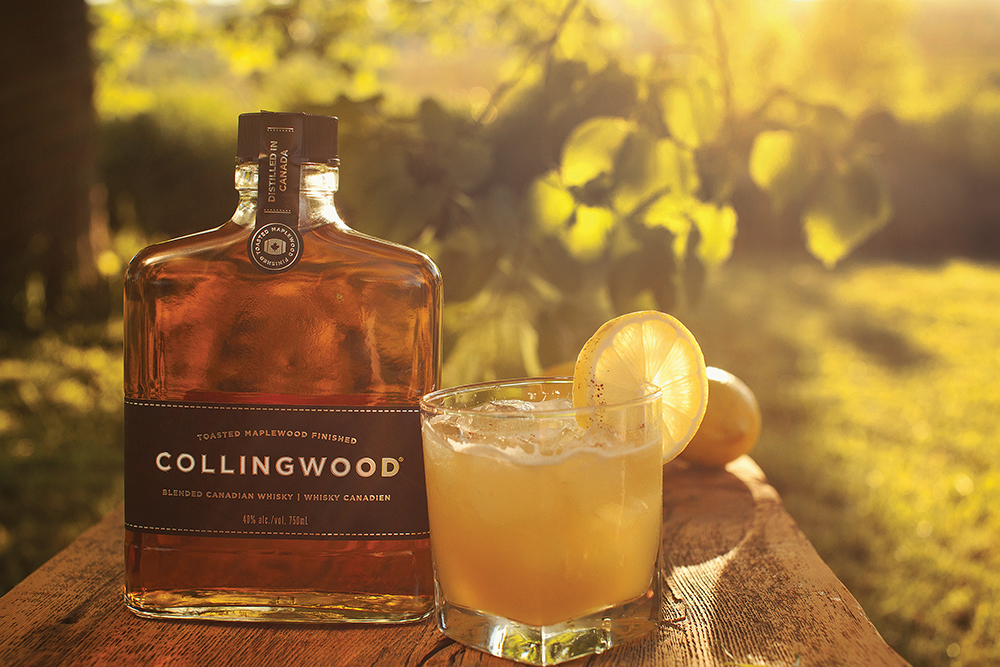That foraging would become the next trend in local eating—it was only natural.
by Anya Shor & Anna Potvin // Photography by Anay Shor
It’s love. It’s camaraderie. It’s sustainability. It’s community. It’s for the love of food, our forests and ecosystem.
Any conscientious food lover understands the term “locavore” to mean eating and cooking dishes made up of ingredients sourced as nearby and within-season as possible. Locavorism was a movement coined with the publication of the book The 100-Mile Diet, which encouraged and touted the benefits of eating food sourced within that intimate stone’s throw of where we live.
Socially and culturally, the emphasis was on sustainability. Food produced closer to home was not only fresher due to reduced travel and storage time, but better environmentally, not to mention the fact that it supports local farmers.
The idea that something could be pulled or dug out of the ground and end up on your dinner plate the same day inspired domestic and professional chefs alike. Farm-to-table became a culinary touchstone.
It was only natural that this renewed interest in locally cultivated produce soon inspired the next question: “What is growing already, and how much of it is edible?” It wasn’t just local anymore, it was wild. Enter foraging—locavorism’s latest iteration.
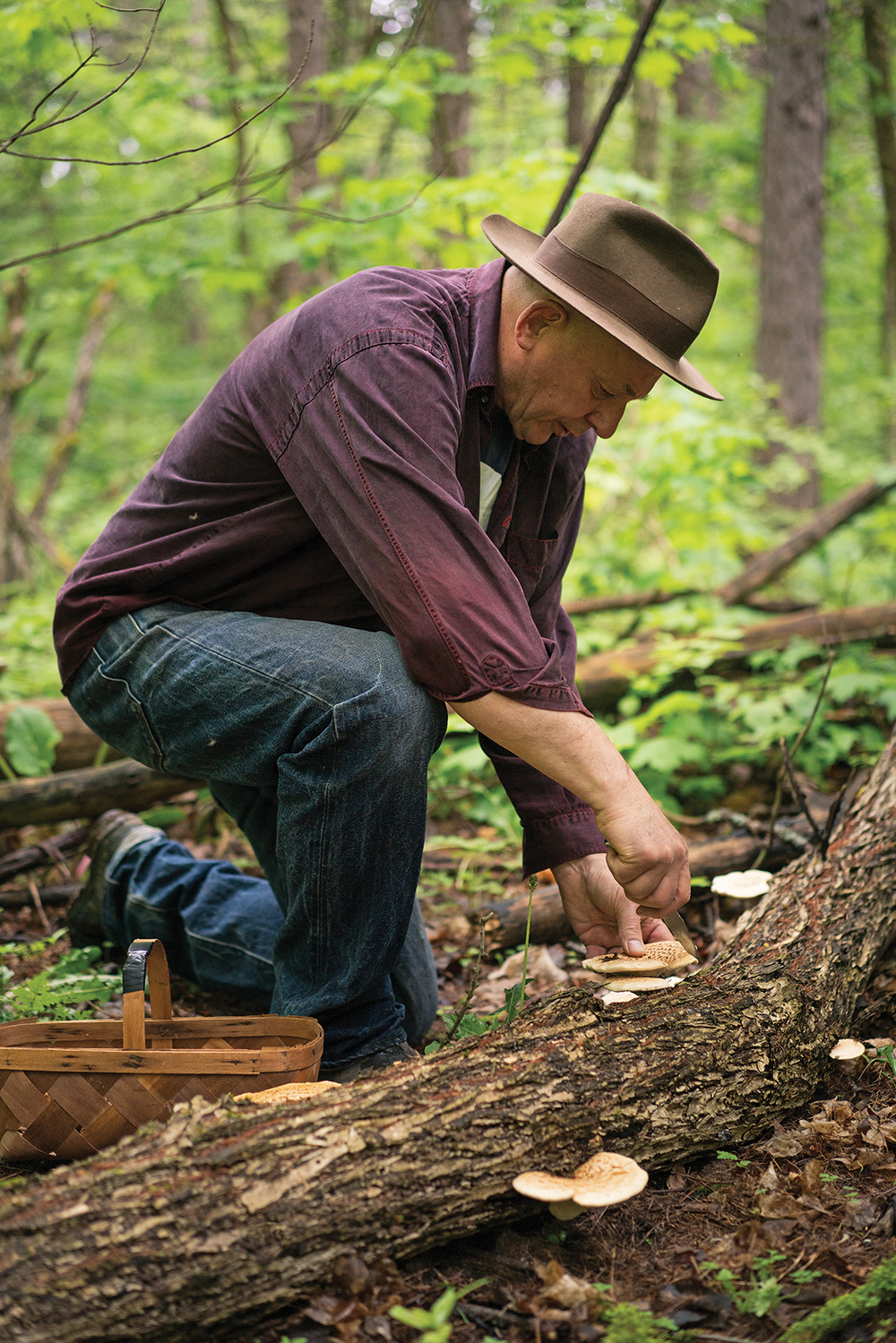
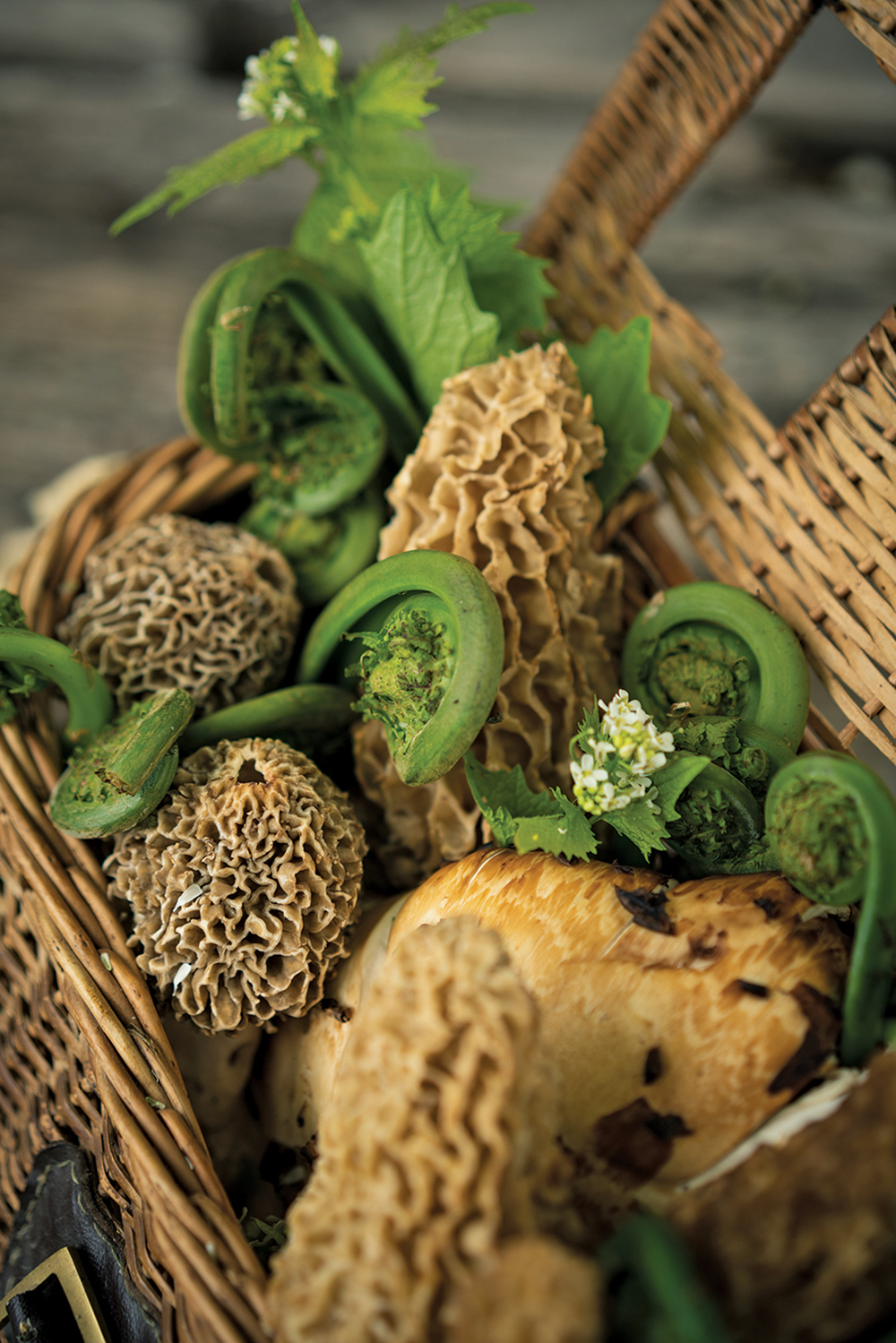
For chef Michael Stadtländer, a farm-to-table pioneer, farming and foraging have always gone hand-in-hand. He began serving meals created almost entirely of produce and meats he grew, harvested and foraged himself, to urban diners eagerly making the pilgrimage to his Singhamptom farm, Eigensinn, over two decades ago. It was a dream which originated from Stadtländer’s childhood in Northern Germany, where farming and foraging skills were honed together.
The 100 acres surrounding the Stadtländer farmhouse offer up a bounty of wild edibles. The first delicacies appear not long after snowmelt—a carpet of wild leeks, fiddleheads, asparagus, the elusive and prized morel mushroom, stinging nettle, wild ginger and fairytale-like dryad’s saddle mushrooms (commonly known as pheasant backs).
On the table, it’s a matter of course, so to speak, to find wild mushrooms, herbs, berries, or any number of wild vegetables and fruit nestled on a handmade plate with Stadtländer’s own farm-raised pork, or swimming in a bowl of wild ginger-scented ice cream.
Summer and fall continue to bring delectable finds such as wild mustard, several varieties of choice mushrooms, and edible flowers including the oxeye daisy (which is blanched and put into vinegar). In late October, wild grapes make for “the best jam.”
And the dance doesn’t stop there. The relationship between nature as producer and farmer-chef as harvester and forager also includes bees. Two hives produce enough honey for the season—one is scented with foraged pine shoots for a more floral finish, while spruce shoots yield a more acidic note.
In recent years, Stadtländer has been joined by a new, younger generation of chefs and restaurant owners in embracing the forest-to-table approach.
Sumac & Salt is the passion project of Hannah Harradine and Joel Gray, what they call “a hyper-local culinary experience.”
“We started this with the intention to use only 100 percent local, sustainable and seasonal ingredients,” says Harradine.
Through the pandemic, the couple offered a travelling catering experience for private groups of diners. This summer, the couple are set to open their own farmhouse restaurant at their Markdale property.
Everything they forage throughout the season they’ll preserve to get them through the winter months. They blanch and freeze leek tops to later dehydrate and use as seasoning; they pickle knotweed to use as garnish; they make simple syrups out of dandelions for cocktails. The rest they rely on local farmers to provide.
“We really only work with what our farmers are able to give us at that moment,” says Harradine.
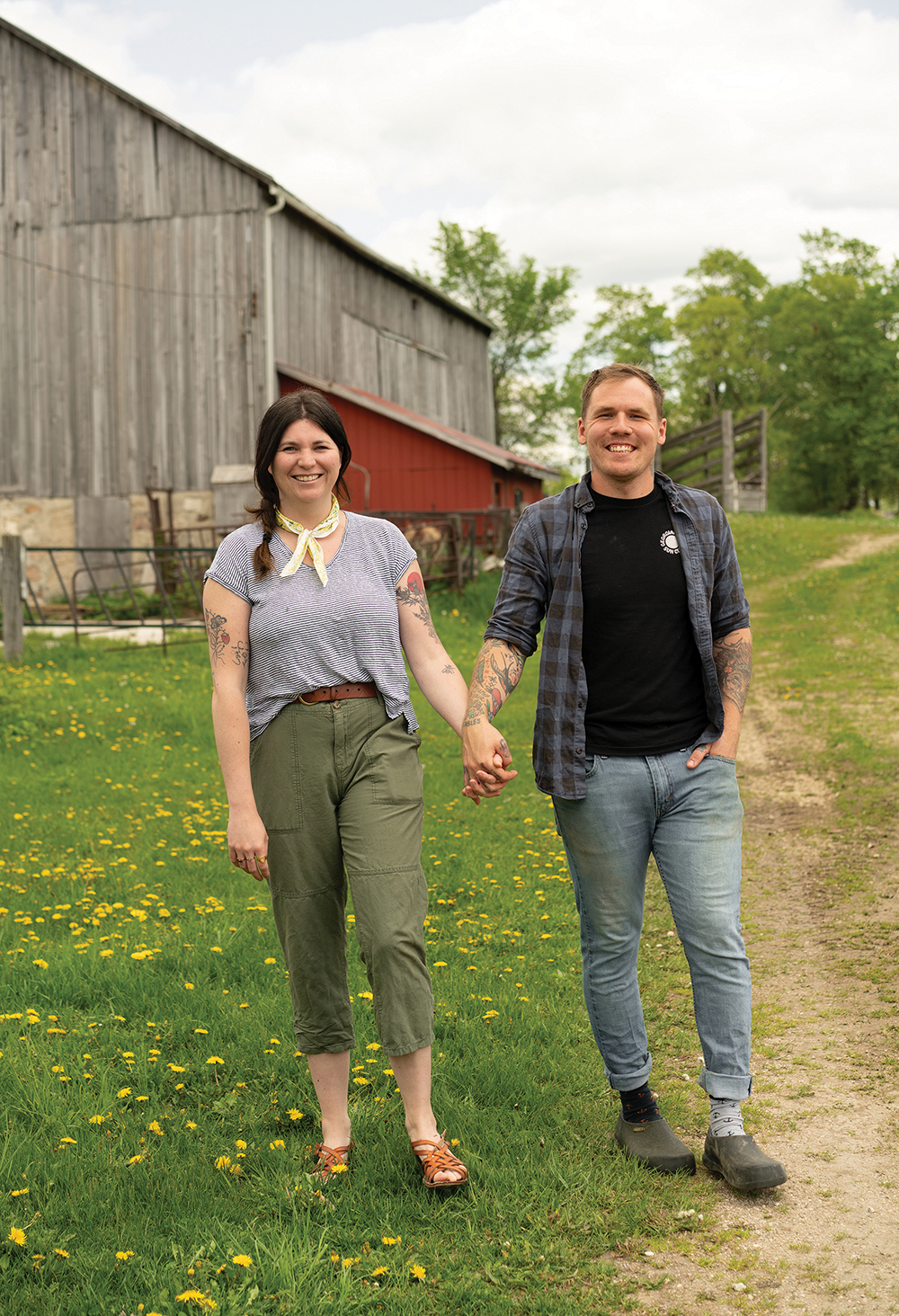
Along with the usual fiddleheads and leeks, some less-expected additions might include yarrow, lambs quarter, spruce catkin capers and pineapple weed.
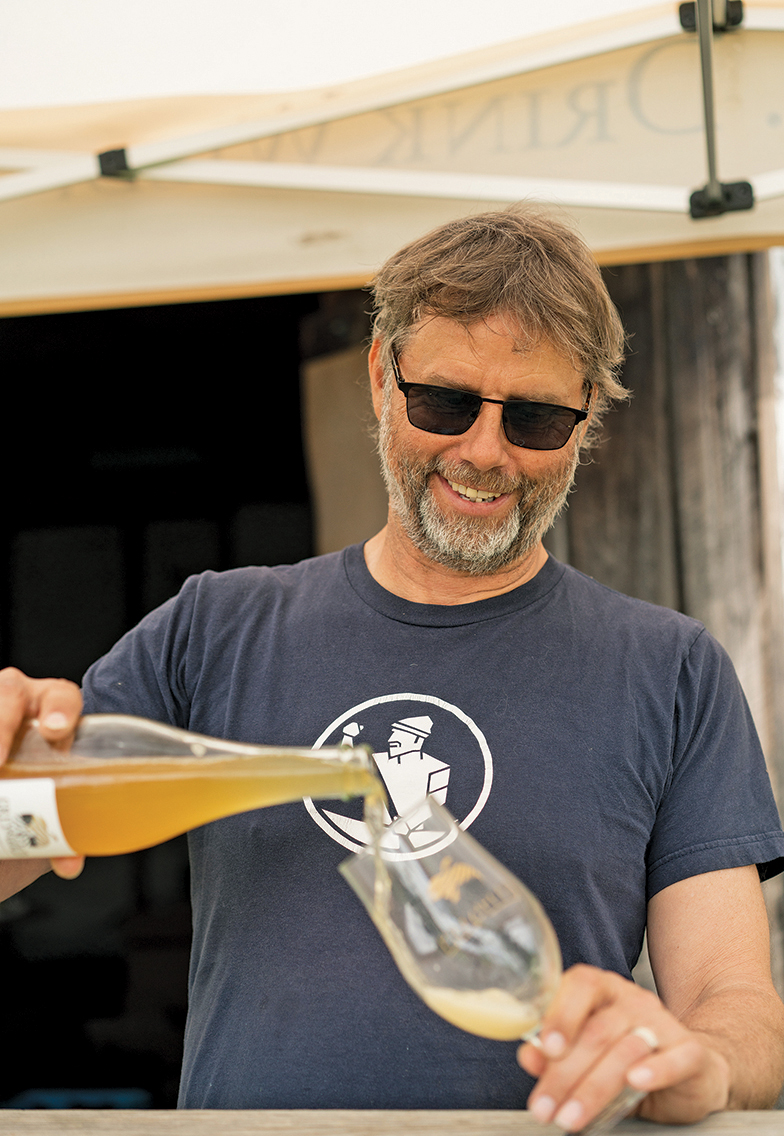
This spirit of camaraderie, the give-and-take relationship between the local restaurants, cideries and farms, is beautiful. Nicholas Stark, owner of Stark North in Grey County, cultivates and sells fresh and dehydrated cultivated and wild mushrooms, leeks and greens while in season, using only sustainable and traditional methods.
A chef of 20 years, Stark was inspired by a noticeable lack of quality, local ingredients to connect with the land and begin producing his own. Now his business directly supplies restaurants in Toronto, Collingwood, Grey County (including Sumac & Salt) and Ottawa, as well as offering products online.
David Baker, of Grey & Gold Cider—a sustainable, farm-based cidery in The Blue Mountains—adds foraged spruce tips to infuse his award-winning Spruce of the Bruce dry cider. Some of his other bottles suggest infusions of wild flowers, juniper, sumac and wild grapes—all foraged from the surrounding fields and hedgerows. The result is unexpectedly elegant and complex, simultaneously crisp and earthy.
And nothing goes to waste. The fermentation by-product called cider lees goes to Sumac & Salt to use as a base for glazes and marinades. Baker also praises fellow cider-maker Mark Skinner, of Windswept Cidery in Meaford, for his sustainable practice of harvesting apples from abandoned orchards.
When the chefs are passionate about sourcing local, foraging and hand picking every detail for dishes they create, they commonly offer just one set tasting menu. But when you are dining at one of Canada’s 100 best restaurants—an honour recently bestowed on Collingwood gem The Pine—you happily submit and settle in for the journey.
Owned by the charming and talented husband and wife team Cassie and Jeremy Austin, The Pine is a unique culinary and architectural dining experience.
The couple started the restaurant as a pop-up on their property, Royal Acres Farm, before moving to their small downtown location in 2020. Having previously lived throughout Europe, they were inspired to create dishes that were truly Canadian from the base up. All of their ingredients are sourced within Canada, and the majority of their creations include something foraged. Along with the usual fiddleheads and leeks, some less-expected additions might include yarrow, lambs quarter, spruce catkin capers and pineapple weed.
There has been a noticeable shift in people’s responses to seeing foraged ingredients on their plates and in their cups. Perhaps the pandemic brought us all closer to nature, which prompted the renewed interest and curiosity in foraging and wild edibles. Unfortunately, this also presents the danger of over-harvesting.
“Have a good understanding of the plant you’re harvesting and its life cycle,” advises Stark.
Harradine’s caution goes further. “Keep your patches to yourself! One person tells one person and the cycle continues.”
The effects of wanton harvesting can wreak havoc. Wild leeks, for example, take seven years to regenerate. If a patch is cleared, it’s unlikely to come back at all. It’s important to have the right knowledge.
“Only take from an area that has tons, and only take a small fraction—that’s the key element of any foraging,” says Baker.
Our bountiful region has no shortage of delicious offerings from the people who do know how to forage, with beautiful culinary results. “People are getting a real plateful of what we represent in our area. Guests come to us from France, Japan, Toronto. They get a real taste,” says Stadtländer. “You’re actually eating the landscape!”
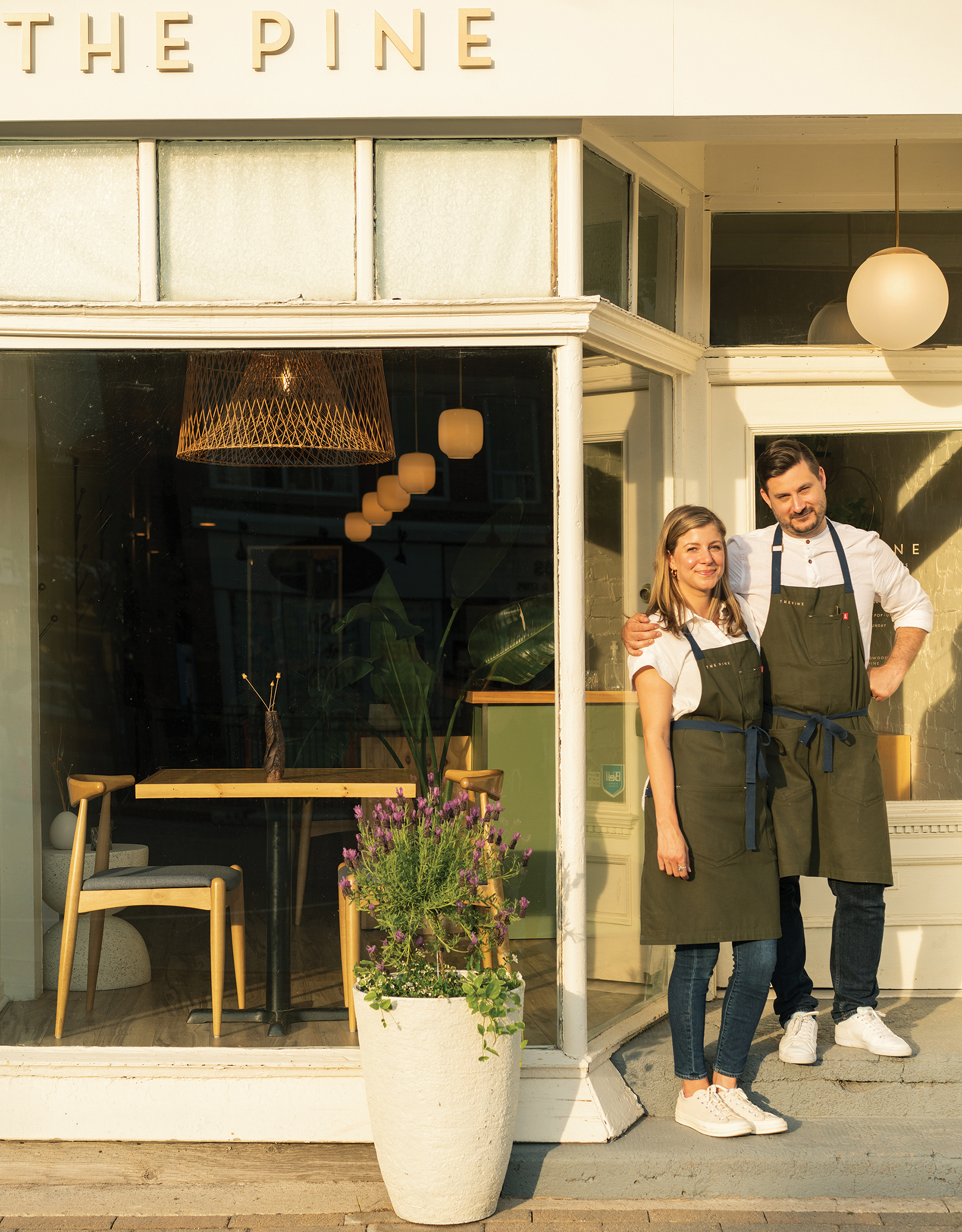
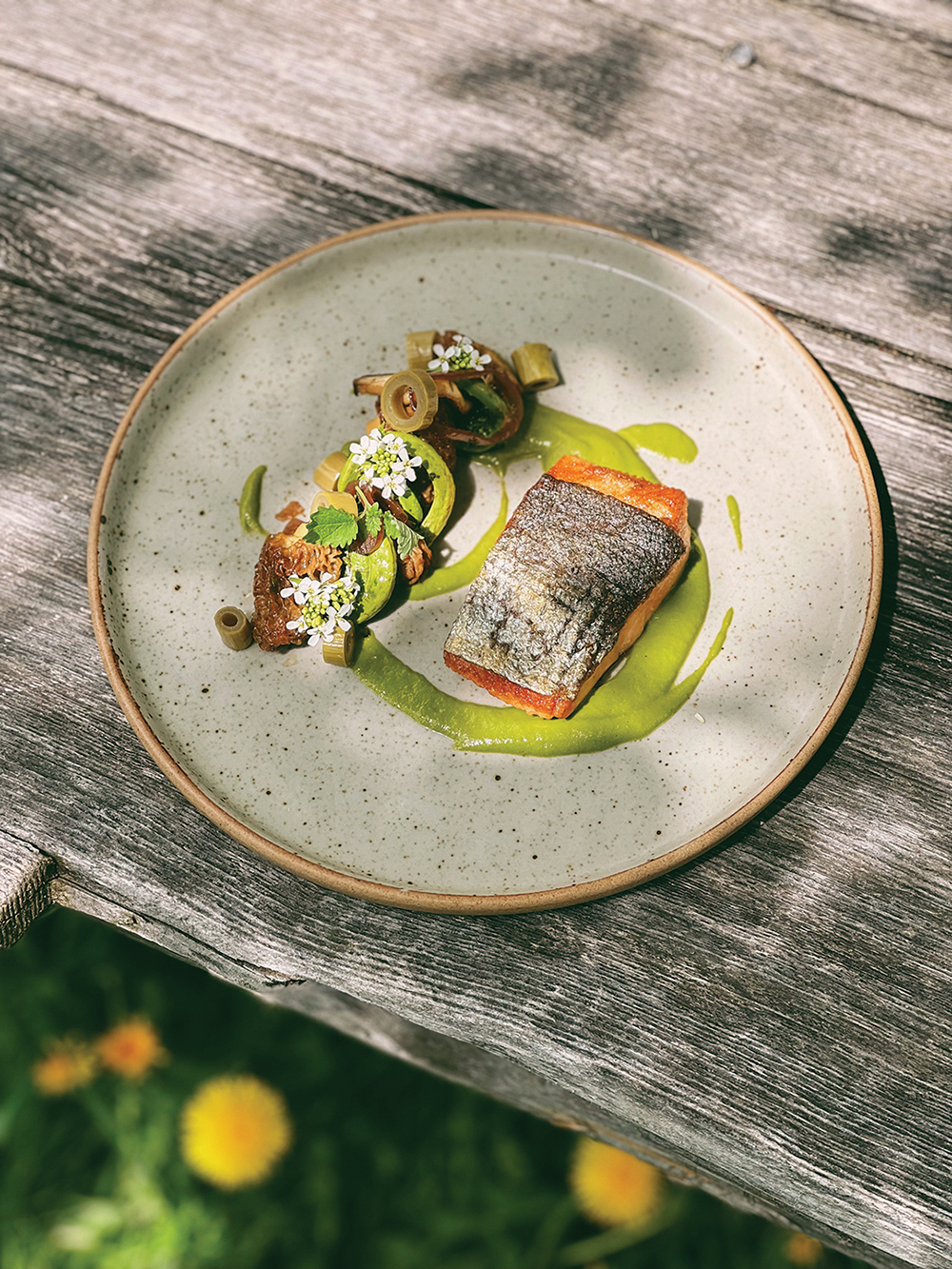
Sumac & Salt’s Springhills trout with wild leek velouté, fiddleheads and morels.
The Pine’s Yunnanese-style tartare with wild mint emulsion, spruce catkin capers, fiddlehead piccalilli, chewy morels, lamb’s quarters, wintercress, and a spruce-tip-and-pecorino frico.
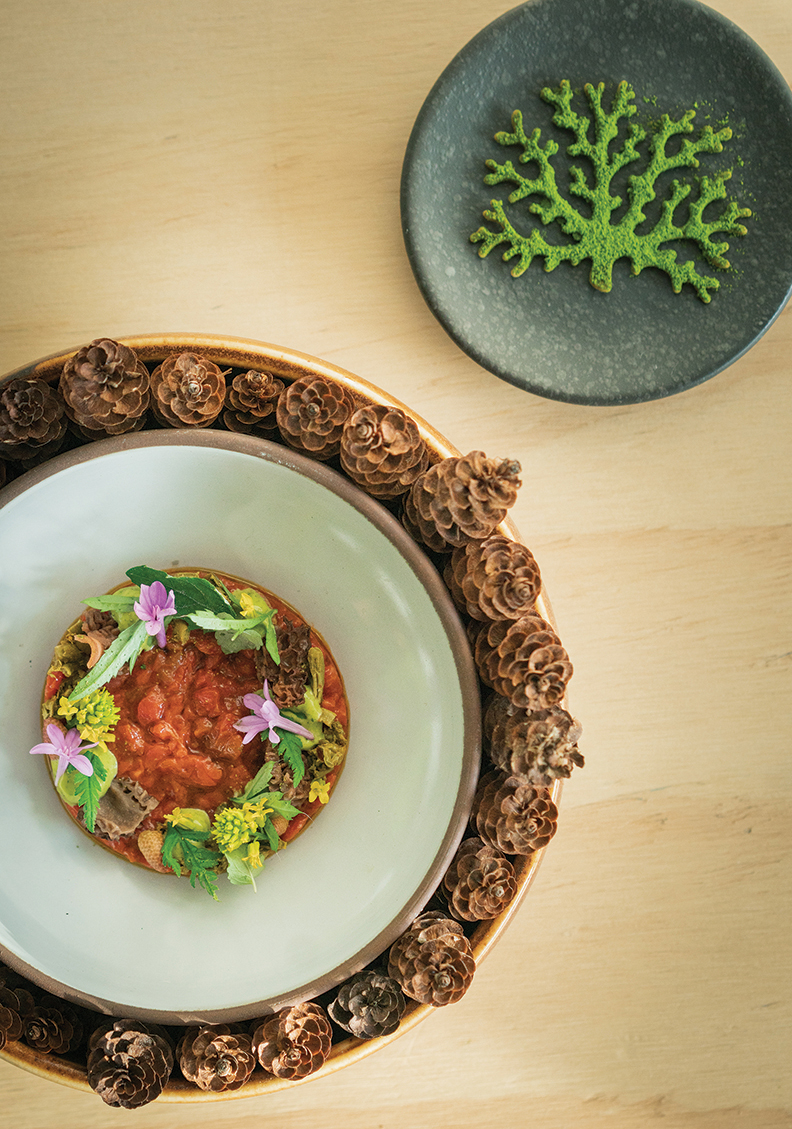
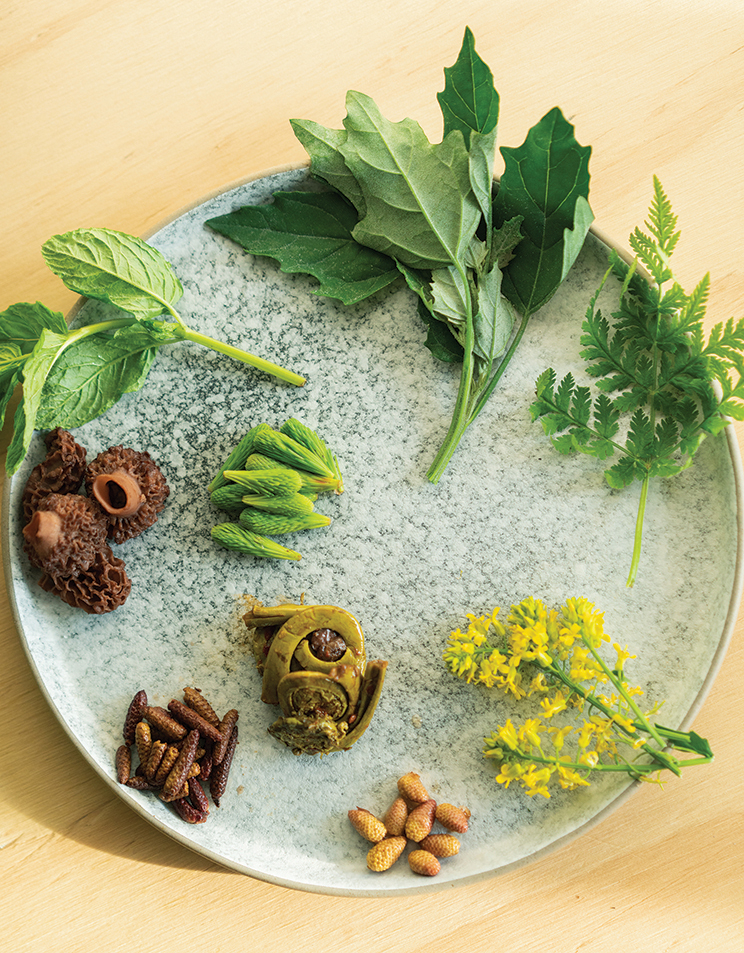
A plate of local, foraged
ingredients from The Pine.
Eigensinn farm chicken with dryad’s saddle mushroom glazed with apple cider, maple syrup, mustard, lovage and wild marjoram.
